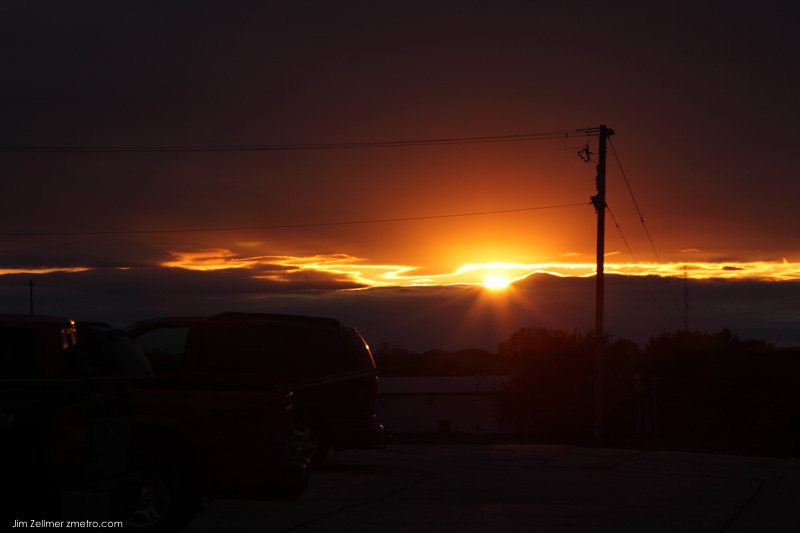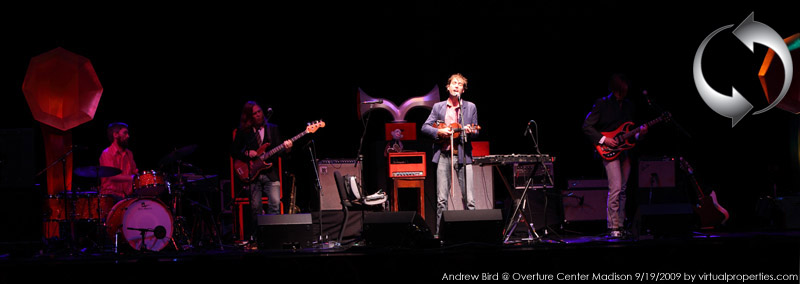
On display in Madison today. A wonderful, sunny day after several rainy, cold episodes.


On display in Madison today. A wonderful, sunny day after several rainy, cold episodes.

White-knuckle airline passengers who are already shaken by news that two Northwest Airlines pilots are under investigation for overshooting a Minneapolis airport after possibly nodding off won’t want to hear this: Some pilots say cockpit catnaps happen.
“Pilots on occasion do take controlled naps,” said Barry Schiff, an aviation safety consultant and retired TWA pilot. “So this is not without precedent.”
Although the Federal Aviation Administration prohibits pilots from catching a few z’s in the cockpit, several airline pilots say they are surprised that napping mishaps haven’t happened more often, considering longer work schedules for pilots and advances in aviation that make planes easier to fly.
The issue of cockpit siestas came under scrutiny this week after the FAA and the National Transportation Safety Board announced they were looking into why Northwest Flight 188, from San Diego to Minneapolis, overshot its airport by 150 miles before turning around.
Flying from the west coast last year, I sat next to an international pilot flying home. This pilot pounded coffee (POUNDED!) during our four hour flight. He mentioned the long Asia routes and the typical 36 hour turnarounds. I asked how they stay alert on 12 to 16 hour flights? He responded that cockpit etiquette is set by the captain. If he/she starts to read a book, then the others can do so. We never discussed falling asleep, though, based on the coffee intake, it would seem to be a natural outcome of these trips.
It will be business as usual for Goldman Sachs this morning. The bank will annoy a lot of people.
Goldman, the institution that came through last year’s financial crisis best – arguably the only pure investment bank left standing – will say how much money it made in the third quarter (a lot) and how many billions it has stored for bonuses (about $5.5bn towards a likely 2009 bonus pool of $23bn).
For believers in Goldman’s ethical standards and way of doing business, these are difficult times. Although it avoided the mistakes that brought down Bear Stearns and Lehman Brothers, forced Merrill Lynch into Bank of America’s arms, and prodded Morgan Stanley further into lower-risk retail broking, Goldman has become a whipping boy.
There is outrage that, having taken government money to survive the crash, Goldman is in such rude health that it will hand out billions in bonuses. Matt Taibbi, a Rolling Stone writer, caught the mood memorably by describing Goldman as “a giant vampire squid wrapped around the face of humanity”.
Such is Goldman’s importance to Wall Street and regulation that I am devoting a pair of columns to it. Today, I will discuss the Goldman problem (different and less egregious to what Mr Taibbi believes, but still a problem). Next week, I will suggest what should be done about it by regulators and the bank itself.
Goldman executives were wounded by how seriously Mr Taibbi’s piece was taken despite their riposte that vampire squids are small creatures that present no danger to humanity. He accused it of profiting from bubbles such as the US internet and housing booms, and of repeatedly “selling investments they know are crap” to retail investors.
An earthquake that began beneath an obscure mountain in Santa Cruz County called Loma Prieta struck terror into Northern California 20 years ago this week on a beautiful fall afternoon, just as a World Series game was about to begin in San Francisco.
The quake lasted only 15 seconds, but it killed 67 people, smashed downtown Santa Cruz, wrecked San Francisco’s Marina district, broke the Bay Bridge – and changed much of the Bay Area.
Loma Prieta was one of those watershed events; in some ways, the disaster was a blessing in disguise. Out of it came a brand new San Francisco waterfront, the revival of a rundown neighborhood in Hayes Valley, major upgrades of classic buildings in downtown Oakland, and new laws on unreinforced old buildings. One of these years, a new eastern half of the Bay Bridge will open.
More notes and links on Loma Prieta, including my recollection(s) and that of Brian Zimdars.
This, they toss off with the certainty of wine-fuelled genius, also explains the rise in the gold price.
Actually, I do not think that is how the bank risk paradox will play out.
There are going to be much larger write-offs and reserves taken at all the big banks, with the peak in reported bad news probably coming next year. However, the taxpayer will not be asked for more capital, and the Federal Reserve and Treasury will gradually dismantle the temporary support structures, just as they say.
How is this possible? Because the public will pay through usury, not taxation. There is a big difference, of course. Usury is less visible, and you cannot effectively vote against it.
Blood will flow, but it will do so not as a catastrophic bath for the banks, but as a gradual transfusion to them from their customers.
There will be headline risk for the banks’ management and public securities, which is why I think that their CDS protection is too cheap at the moment.
One source of headline risk is the spectre of Federal Government reform of the financial system. God knows there is a good case to be made for de-cartelising the industry, but that is not going to happen.
Bank spreads are at record levels. Their cost of funds is nearly 0, while they lend it out at 4.99% or (much) greater. Plus, the fees.
Chrystia Freeland – video.
“By buying U.S. Treasuries and mortgages to increase the monetary base by $1 trillion, Fed Chairman Ben Bernanke didn’t put money directly into the stock market, but he didn’t have to. With nowhere else to go, except maybe commodities, inflows into the stock market have been on a tear. The dollars he cranked out didn’t go into the hard economy, but instead into tradable assets.”
— “The Bernanke Market,” Wall Street Journal, July 15, 2009
“In the last week alone, the European Central Bank allocated the record sum of $619 billion to 1,1,00 financial institutions – at a paltry 1 percent interest rate. And yet the money is not going where the central banks want it to go, namely into the pockets of businesses and consumers – at least not at reasonable interest rates.”
— “How German Banks are Cashing In on the Financial Crisis,” Der Spiegel, July 1, 2009
Two weeks ago, in meetings with their North Texas dealers, both Toyota and Honda voiced concern about how the economic recovery was going to hold up over the next few quarters. It wasn’t public news yet in the States, but Japanese executives already knew that their imports and exports had fallen sharply through the summer. And, while our business media were cheerleading because the Dow Jones was once again flirting with 10,000, in Japan their exports had just fallen 36 percent; metal shipments to the U.S. were down by more than 80 percent, automobile shipments by 50 percent. This was a problem here, too: In August America’s dealers seriously needed Japanese vehicles to restock their depleted inventories.
Toyota and Honda took different tacks for the fourth quarter. Toyota said it will spend $1 billion in advertising to move the retail market. Honda, always more cautious in difficult times, said it would spend nothing during the same period. Honda added that it will keep dealer inventories at a 30-day supply of unsold vehicles, half the inventory considered normal.

Fall has arrived.
hy is a soon-to-be success story gathering dust at TATA dealers across India? Much like the initial growing pains of the Ford Model T, the $2000 Nano currently lies on waiting list. Given the lopsided supply/demand and construction conflagrations with the government, I reckon enterprising Indians are flipping the Nanos living in parking lot limbo for profit. Still, my precious few moments sitting in somebody’s dusty Nano left me impressed. Not because it was a perfect machine: I saw automotive history in the making.
Rarely in America is a car designed around a vision: witness the overweight performance icons clawing for yesteryear’s glory, car based trucks and globally designed, badge engineered atrocities. Not with the TATA Nano: behold the homegrown hero.
The Nano is born from an undying need for affordable transportation in a country with a growing but repressed middle class. This group needs a family vehicle superior to tube frame rickshaws and 150cc motorcycles carrying four or more people. Yes, really: I saw a family of four riding a motorcycle through the congested, fast paced, life threatening streets of Bangalore. Make no mistake: a car at this price and size is the automotive embodiment of “If you Build It, They Will Come.”
It’s all about the lakhs; the Nano is designed around a price befitting the Indian working class. One look around the beast shows the good, bad and ugly of the situation.
Exterior fit and finish is respectable, until you spot the unfinished rear hatchback seams, hurriedly painted over. That stylish rear hatch is glued shut, so cargo is only accessible from the rear seat. And the list of price-conscious ideas doesn’t stop: three-lug wheels, single arm wiper blade and an adorable looking center exit exhaust.

Click on the image above to view a panoramic scene. A few still photos can be seen here.
Bird appeared in Madison as part of the 2009 Forward Music Festival.